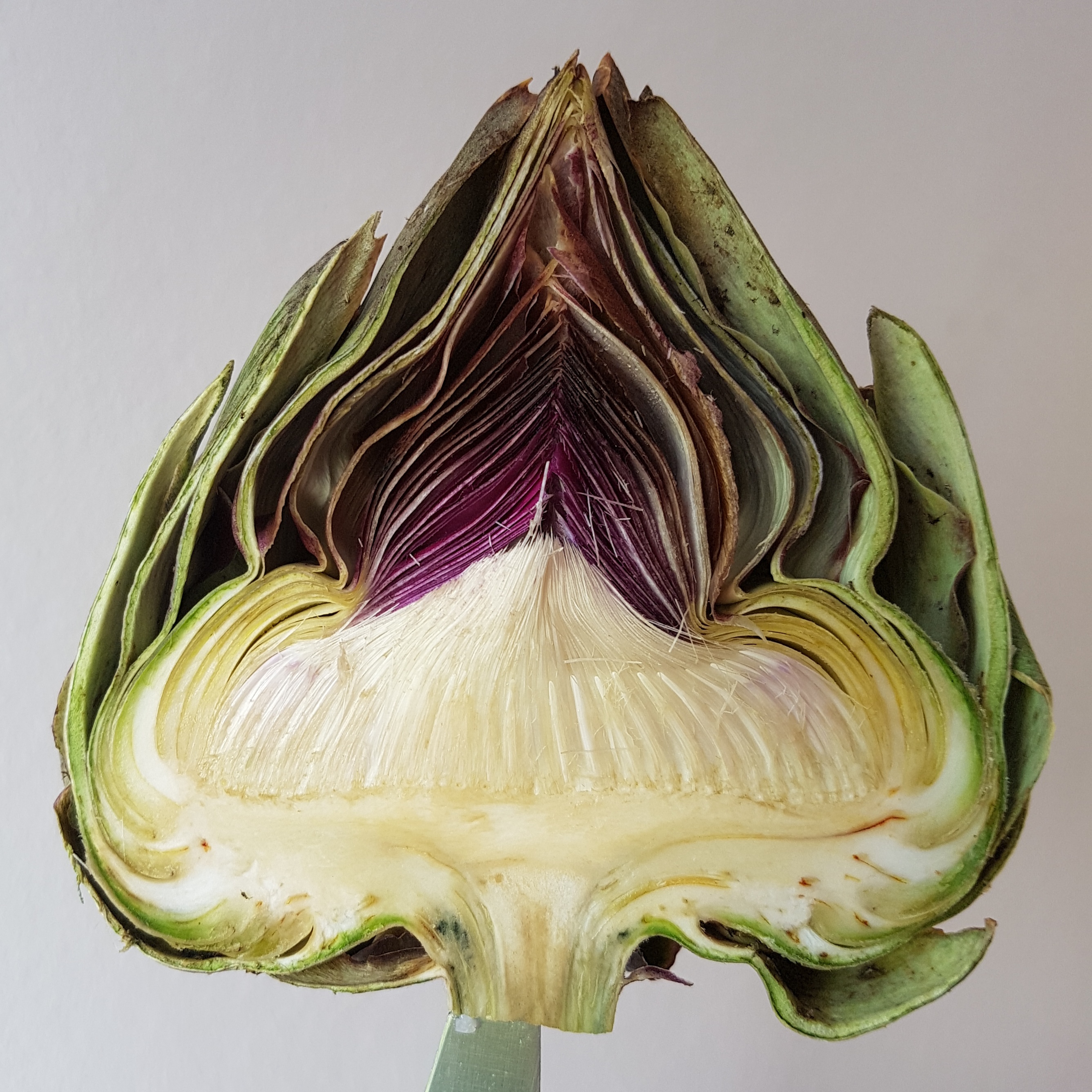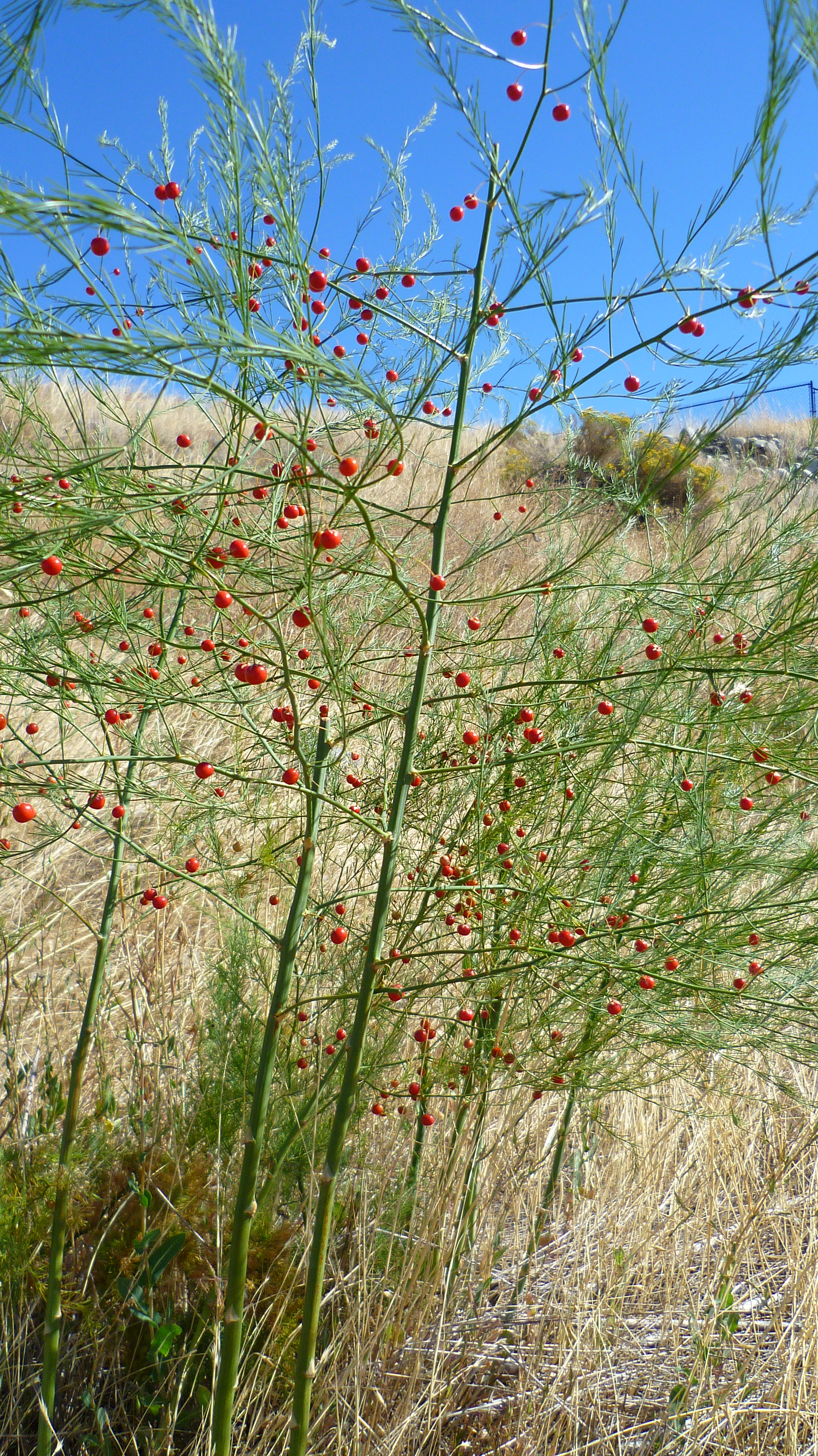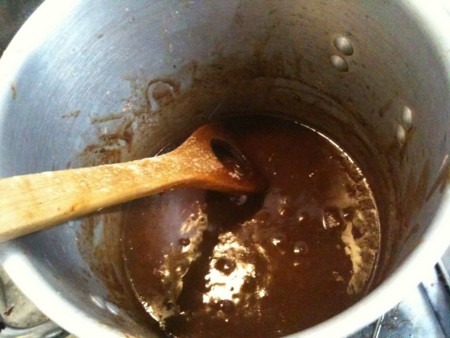|
Pommes Anna
''Pommes Anna'', or Anna potatoes, is a classic French dish of sliced, layered potatoes cooked in a very large amount of melted butter. There are several variants of the dish, containing, in addition to potatoes and butter, other ingredients, which may include artichoke hearts, black truffles, mushrooms and cheese. Ingredients The recipe calls for firm-fleshed potatoes and butter only. Potatoes are peeled and sliced very thin. The slices, salted and peppered, are layered into a pan (see below), generously doused with clarified butter, and baked until they form a cake. Then the cake is flipped every ten minutes until the outside is golden and crisp. At the end of the cooking period, the dish is unmoulded and forms a cake in diameter and about high.Beck and Child, pp. 515–521 It is then cut in wedges and served immediately on a hot plate, usually accompanying cooked meat. A special double baking dish made of copper called ''la cocotte à pommes Anna'' is still manufactured in ... [...More Info...] [...Related Items...] OR: [Wikipedia] [Google] [Baidu] [Amazon] |
Artichoke
The artichoke (''Cynara cardunculus'' var. ''scolymus''),Rottenberg, A., and D. Zohary, 1996: "The wild ancestry of the cultivated artichoke." Genet. Res. Crop Evol. 43, 53–58. also known by the other names: French artichoke, globe artichoke, and green artichoke in the United States, is a variety of a species of thistle cultivated as food. The edible portion of the plant consists of the flower buds before the flowers come into bloom. The budding artichoke flower-head is a cluster of many budding small flowers (an inflorescence), together with many bracts, on an edible base. Once the buds bloom, the structure changes to a coarse, barely edible form. Another variety of the same species is the cardoon, a perennial plant native to the Mediterranean region. Both wild forms and cultivated varieties (cultivars) exist. Description This vegetable grows to tall, with arching, deeply lobed, silvery, glaucous-green leaves long. The flowers develop in a large head from an edible bud ... [...More Info...] [...Related Items...] OR: [Wikipedia] [Google] [Baidu] [Amazon] |
Sirloin
In American butchery, the sirloin steak (called the ''rump steak'' in British butchery) is cut from the sirloin, the subprimal posterior to the short loin where the T-bone, porterhouse, and club steaks are cut. The sirloin is divided into several types of steak. The top sirloin is the most prized of these and is specifically marked for sale under that name. The bottom sirloin, which is less tender and much larger, is typically marked for sale simply as "sirloin steak". The bottom sirloin, in turn, connects to the sirloin tip roast. In a common British, South African, and Australian butchery, the word ''sirloin'' refers to cuts of meat from the upper middle of the animal, similar to the American short loin, while the American ''sirloin'' is called the rump. Because of this difference in terminology, in these countries, the T-bone steak is regarded as a cut of the sirloin. Etymology The word ''sirloin'' derives from the Middle English ''surloine'', itself derived from t ... [...More Info...] [...Related Items...] OR: [Wikipedia] [Google] [Baidu] [Amazon] |
French Cuisine
French cuisine is the cooking traditions and practices of France. In the 14th century, Guillaume Tirel, a Court (royal), court chef known as "Taillevent", wrote ''Le Viandier'', one of the earliest recipe collections of medieval France. In the 17th and 18th centuries, chefs François Pierre La Varenne and Marie-Antoine Carême spearheaded movements that shifted French cooking away from its foreign influences and developed France's own indigenous style. French cheese, Cheese and French wine, wine are a major part of the cuisine. They play different roles regionally and nationally, with many variations and ''appellation d'origine contrôlée'' (AOC) (regulated appellation) laws. Culinary tourism and the ''Guide Michelin'' helped to acquaint commoners with the ''cuisine bourgeoise'' of the urban elites and the peasant cuisine of the French countryside starting in the 20th century. Many dishes that were once regional have proliferated in variations across the country. Knowledg ... [...More Info...] [...Related Items...] OR: [Wikipedia] [Google] [Baidu] [Amazon] |
List Of Foods Named After People
A list is a set of discrete items of information collected and set forth in some format for utility, entertainment, or other purposes. A list may be memorialized in any number of ways, including existing only in the mind of the list-maker, but lists are frequently written down on paper, or maintained electronically. Lists are "most frequently a tool", and "one does not ''read'' but only ''uses'' a list: one looks up the relevant information in it, but usually does not need to deal with it as a whole". Lucie Doležalová,The Potential and Limitations of Studying Lists, in Lucie Doležalová, ed., ''The Charm of a List: From the Sumerians to Computerised Data Processing'' (2009). Purpose It has been observed that, with a few exceptions, "the scholarship on lists remains fragmented". David Wallechinsky, a co-author of '' The Book of Lists'', described the attraction of lists as being "because we live in an era of overstimulation, especially in terms of information, and lists help ... [...More Info...] [...Related Items...] OR: [Wikipedia] [Google] [Baidu] [Amazon] |
Black Truffle
''Tuber melanosporum'', called the black truffle, Périgord truffle or French black truffle, is a species of truffle native to Southern Europe. It is one of the most expensive edible fungi in the world. In 2013, the truffle cost between 1,000 and 2,000 euros per kilogram. Description The round, dark brown fruiting bodies ( ascocarps) have a black-brown skin with small pyramidal cusps. They have a strong, aromatic smell and normally reach a size of up to . Some may be significantly larger, such as a black truffle found in 2012 in Dordogne with a mass of . Their flesh is initially white, then dark. It is permeated by white veins, which turn brown with age. The spores are elliptical and measure about 22–55 μm by 20–35 μm. They are dark brown and covered with large spikes. In the Northern Hemisphere, the fruiting bodies develop from April to June and are harvested from November to March. Until 2010, all truffle species were thought to be homothallic, that is, ca ... [...More Info...] [...Related Items...] OR: [Wikipedia] [Google] [Baidu] [Amazon] |
Julienning
Julienne, , or French cut, is a culinary knife cut in which the food item is cut into long thin strips, similar to matchsticks. Common items to be julienned are carrots for , celery for , potatoes for julienne fries French fries, or simply fries, also known as chips, and finger chips (Indian English), are ''List of culinary knife cuts#Batonnet, batonnet'' or ''Julienning, julienne''-cut deep frying, deep-fried potatoes of disputed origin. They are prepa ..., or cucumbers for . Trimming the ends of the vegetable and the edges to make four straight sides makes it easier to produce a uniform cut. A uniform size and shape ensures that each piece cooks evenly and at the same rate. The measurement for julienne is . Once julienned, turning the subject 90 degrees and dicing finely will produce brunoise (). The first known use of the term in print is in François Massialot's (1722 edition). The origin of the term is uncertain. See also * Mandoline * Brunoise * Chif ... [...More Info...] [...Related Items...] OR: [Wikipedia] [Google] [Baidu] [Amazon] |
Asparagus
Asparagus (''Asparagus officinalis'') is a perennial flowering plant species in the genus ''Asparagus (genus), Asparagus'' native to Eurasia. Widely cultivated as a vegetable crop, its young shoots are used as a spring vegetable. Description Asparagus is an herbaceous, perennial plant growing typically to tall, with stout stems with much-branched, feathery foliage. It has been known to grow as long as . The 'leaves' are needle-like cladodes (Aerial stem modification, modified stems) in the Leaf#Morphology, axils of scale leaves; they are long and broad, and clustered in fours, up to 15, together, in a rose-like shape. The root system, often referred to as a 'crown', is adventitious; the root type is Fascicle (botany), fasciculated. The flowers are bell-shaped, greenish-white to yellowish, long, with six tepals partially fused together at the base; they are produced singly or in clusters of two or three in the junctions of the branchlets. It is usually dioecious, with male ... [...More Info...] [...Related Items...] OR: [Wikipedia] [Google] [Baidu] [Amazon] |
Beef Tenderloin
A beef tenderloin (US English), known as an eye fillet in Australasia, nautalund in Iceland, filetto in Italy, oxfilé in Sweden, filet in France, filet mignon in Brazil, and fillet in the United Kingdom and South Africa, is cut from the loin of beef. Description As with all quadrupeds, the tenderloin refers to the psoas major muscle ventral to the transverse processes of the lumbar vertebrae, near the kidneys. The tenderloin is an oblong shape spanning two primal cuts: the short loin (called the sirloin in Commonwealth countries) and the sirloin (called the rump in Commonwealth countries). The tenderloin sits beneath the ribs, next to the backbone. It has two ends: the butt and the "tail". The smaller, pointed end—the "tail"—starts a little past the ribs, growing in thickness until it ends in the "sirloin" primal cut, which is closer to the butt of the cow. This muscle does very little work, so it is the tenderest part of the beef. Processing and preparation Whole tende ... [...More Info...] [...Related Items...] OR: [Wikipedia] [Google] [Baidu] [Amazon] |
Demi-glace
Demi-glace (, 'half glaze') is a rich brown sauce in French cuisine used by itself or as a base for other sauces. The term comes from the French word ''glace'', which, when used in reference to a sauce, means "icing" or "glaze." It is traditionally made by combining one part espagnole sauce and one part brown stock. The sauce is then reduced by half, strained of any leftover impurities, and finished with a sherry wine. Common variants of demi-glace use a 1:1 mixture of beef or chicken stock to sauce espagnole; these are referred to as "beef demi-glace" (''demi-glace au bœuf'') or "chicken demi-glace" (''demi-glace au poulet''). Preparation Due to the considerable effort involved in making the traditional demi-glace, chefs commonly substitute a simple ''jus lié'' of veal stock or to create a simulated version, which the American cookbook author Julia Child referred to as a "semi-demi-glace" (i.e. sans espagnole sauce). See also * Gypsy sauce * List of sauces * Mea ... [...More Info...] [...Related Items...] OR: [Wikipedia] [Google] [Baidu] [Amazon] |
Julia Child
Julia Carolyn Child (Birth name#Maiden and married names, née McWilliams; August 15, 1912 – August 13, 2004) was an American chef, author, and television personality. She is recognized for having brought French cuisine to the American public with her debut cookbook, ''Mastering the Art of French Cooking'', and her subsequent television programs, the most notable of which was ''The French Chef'', which premiered in 1963. Early life Child was born Julia Carolyn McWilliams in Pasadena, California, on August 15, 1912. Child's father was John McWilliams Jr. (1880–1962), a Princeton University graduate and prominent land manager. Child's mother was Julia Carolyn ("Caro") Weston (1877–1937), a paper-company heiress and daughter of Byron Weston, Byron Curtis Weston, a lieutenant governor of Massachusetts. Child was the eldest of three, followed by a brother, John McWilliams III, and sister, Dorothy Cousins. Child attended Polytechnic School and Westridge School from 4th gr ... [...More Info...] [...Related Items...] OR: [Wikipedia] [Google] [Baidu] [Amazon] |
Black Truffles
''Tuber melanosporum'', called the black truffle, Périgord truffle or French black truffle, is a species of truffle native to Southern Europe. It is one of the most expensive edible fungi in the world. In 2013, the truffle cost between 1,000 and 2,000 euros per kilogram. Description The round, dark brown fruiting bodies (ascocarps) have a black-brown skin with small pyramidal cusps. They have a strong, aromatic smell and normally reach a size of up to . Some may be significantly larger, such as a black truffle found in 2012 in Dordogne with a mass of . Their flesh is initially white, then dark. It is permeated by white veins, which turn brown with age. The spores are elliptical and measure about 22–55 μm by 20–35 μm. They are dark brown and covered with large spikes. In the Northern Hemisphere, the fruiting bodies develop from April to June and are harvested from November to March. Until 2010, all truffle species were thought to be homothallic, that is, capab ... [...More Info...] [...Related Items...] OR: [Wikipedia] [Google] [Baidu] [Amazon] |





